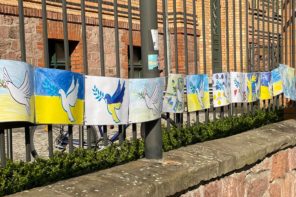In the first of two questions of the second roundtable, human smuggling experts share their views on the (un)intended consequences of anti-smuggling and anti-trafficking policies. We assembled a range of responses that shed light on the question from various angles.
What are the intended/unintended consequences of anti-smuggling and anti-trafficking policies?
European University Institute
Europe’s intense focus on migration control when negotiating with countries of origin and transit neglects several problems. First, prioritising migration concerns may involve sacrificing a lot of other political (human rights protection for both refugees and migrants) and geopolitical priorities. Second, origin and transit countries may simply not be able to fulfil what is asked of them as their capacity to govern their citizens may be relatively weak.
Third, the implementation of such agreements requires the creation of exceptional border regimes for asylum processing (with simplified processing), as happened in Greece in order for the EU-Turkey agreement to be in line with national law. Last and perhaps most important, such a policy often puts the burden of asylum seeking (and irregular migration management) on the weakest and poorest of states, including some countries that currently do not even have a rudimentary rule of law (such as Libya).
Naasim Majidi and Sagaarika Dadu-Brown
Samuel Hall
Without accounting for this holistic understanding of migrant smuggler dynamics in transit locations, most anti-smuggling policies appear to be narrow and one sided. Most do not factor in the abuse perpetrated by law enforcement officials. They also do not sufficiently take into account the nexus between migration and corruption. Mentioned in a number of interviews conducted with smuggled migrants in the Mediterranean, corruption in offices meant to support safe and legal migration channels were an important factor in driving people towards smuggling.
Lastly, we’ve observed a trend in the feminisation of irregular migration – not only an increase in absolute terms of the movement of women using irregular means, but also in the agency and choices that women are increasingly making to use smugglers to reunite with family in countries like Canada. The fact that the Syrian crises have displaced families en masse means that a number of women are forced to choose between either living in transit countries like Turkey that offer little protection or use smugglers to reach Canada.
Their vulnerabilities and exposure to exploitation is only increased when anti-smuggling policies a) focus narrowly on criminalising the smuggler and the practise without a thorough understanding of the dynamics; and b) provide no checks on law enforcement officials.
VU Amsterdam
Anti-smuggling policies are based on the assumption that border brokers create risks for migrants. Aspiring migrants who give money to border brokers, however, understand migration to be intrinsically risky. To minimize those risks, aspiring migrants from Cameroon ask two questions: does a border broker have powerful connections (often with state agents); and does a border broker have the genuine intention to enable a border crossing?
Peter Tinti and Tuesday Reitano
Global Initiative against Transnational Organized Crime
Often times, such measures drive up the price of smuggling services, as smugglers factor increased risks and challenges into their pricing and pass additional overhead and costs on to the consumer. In other contexts, anti-smuggling policies push small-time entrepreneurs out of the smuggling market. This provides the impetus for more sophisticated criminal actors to coordinate and coalesce around the profits to be made, or for other more established criminal organizations – who have the criminal expertise needed to avoid detection, bypass barriers, or bribe officials – to capture the market. Lastly, rather than deter migrants, anti-smuggling policies often do little more than force migrants and asylum seekers to take riskier, more dangerous routes to their destination, increasing their need for a smuggler, rather than reducing it.
The only way to sustainably counter migrant smuggling is to reduce demand for irregular migration through the creation of safe and legal routes. Given that such policies are unlikely to be pursued due to the current political climate, an alternative objective should be to make the smuggling market as minimally criminal and violent as possible. This requires avoiding policies that create volatility in the smuggling market, so as to allow some of the protection and insurance mechanisms that are often inherent in the smuggling industry – such as price guarantees and safety assurance – to develop. These allow for migrants to mitigate against the risks of mistreatment and exploitation.
Caitlin Blanchfield & Nina Valerie Kolowratnik
Columbia University, Graduate School of Architecture, Planning, and Preservation
Anti-smuggling and anti-trafficking policies have far reaching impacts in borderlands communities. For the Tohono O’Odham tribe, which spans the US-Mexico border, border enforcement has led to increased surveillance and militarisation of their homeland and severely impeded cross-border traditional practices and the cross-border mobility of daily life.
The vehicle barrier along the Tohono O’Odham stretch of the international border is merely a fraction of the border’s depth and of the security apparatus on the nation. On the U.S. side, what follows the fence is the 60-foot ‘Roosevelt Reservation’, border patrol roads and officers on the ground, ground sensors, helicopters, checkpoints, and random stops and searches. All of this is within a 100 mile legal “border” zone, where border patrol has extra-constitutional authority.
With more and more border patrol officers on the ground and surveillance infrastructure increasingly pervasive, open space has become hostile in the borderlands. Infringing on the territorial rights of indigenous people, border enforcement practices are impeding Tohono O’Odham members’ mobility within their own territory. Often the private interior is the only space outside of the watch of the border patrol.
With the increasing confinement to the individual home, personal movement is altered and traditional tribal practices impeded, thereby disrupting the tribe’s cultural connection to the land. Frequent car stops and attempts to search homes are based on the assumption that locals are involved in criminal activity. This produces a culture of fear among the O’Odham and infringes on indigenous sovereignty by attempting to act as a law enforcement agency within the O’Odham Nation.
European University Institute
Smuggling often involves overt forms of exploitation and is sometimes turned into what is commonly described as trafficking. However, one of the main conclusions of my research is that exploitation is, at times, consciously and willingly endorsed by its ‘victims’ as a means to enhance their own mobility.
In this sense, we need to move beyond the discussion of whether irregular migration is best defined in terms of trafficking or smuggling and examine how these phenomena are ultimately interconnected, insofar as they are different means by which people move in situations where channels of legal entry are limited if not absent. Instead of lightly conflating human smuggling with human trafficking, we would better serve those on the move by addressing the overall consequences of stricter border regimes and the militarisation of border control.
Interested in more? Read all the answers of the Human Smugglers Roundtable II.
Featured image by Thomas Hawk (flickr, CC BY-NC 2.0)









